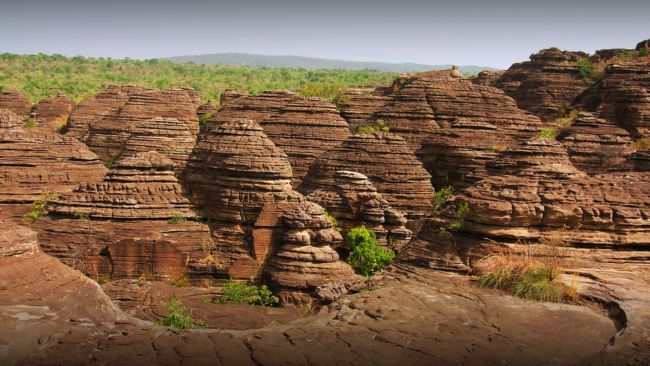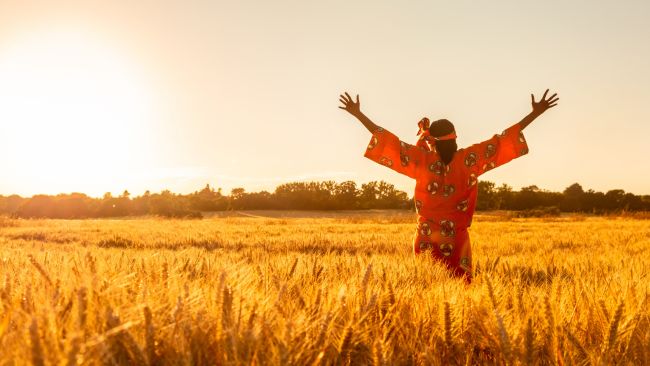Burkina Faso Language and Culture

Burkina Faso, commonly translated as “the land of honest men,” is a landlocked country in West Africa. Burkina Faso is linguistically diverse, with approximately 70 languages spoken across the different ethnic groups, the most common being Moore (Mossi) and Dyula.
Burkina Faso is bordered to the north and northwest by Mali, northeast and north by Niger, southeast by the Benin Republic, and the south by Ghana, Côte d’Ivoire, and Togo, respectively.
The country’s population is estimated at 22,100,683 inhabitants, located in a land area of 274,220 km2. Ouagadougou is the capital of Burkina Faso, which lies approximately 500 miles from the Atlantic Ocean and is situated in the country’s center.
In this article, you will learn more about Burkina Faso’s languages and culture, best business practices, translating for the Burkina Faso market, and how to successfully launch a business in Burkina Faso.
National and Local Languages of Burkina Faso
As of December 2023, French is no longer Burkina Faso’s official language. The government has adopted a bill modifying the Constitution calling for national languages to be the official languages of the country and French will be considered a working language.
Many languages are spoken in the country; Mossi, Dyula, Fulfude/Fula, Gourmanche, and Bambara are the most spoken in Burkina Faso.
- Mossi Language: Mossi is the most widely spoken language in Burkina Faso, with over 5 million speakers. Mossi is a Gur language, classified under the Oti-volta group of languages. Many Mossi speakers can be found near the capital city of Ouagadougou.
- Dyula Language: Dyula is a Mande language mainly spoken in the western regions of Burkina Faso. The language is spoken in neighboring countries such as Mali and the Ivory Coast. The total population of people who speak Dyula in Burkina Faso is around 2,313,000.
- Fulfude/Fula: Fulfulde, also known as Fula or Fulani, is spoken by the Fulani tribe in northern Burkina Faso. It is also spoken by the Fulani population in 18 African countries, such as Nigeria, Ghana, Togo, and Benin etc., with varying dialects. It is estimated that around 2,144,000 people in Burkina Faso speak Fula.
- Gourmanche: Gourmanche is spoken by 5.7% of Burkina Faso’s total population, with an estimated 1,260,000 speakers.
- Bambara: Bambara is the 5th most spoken indigenous language in Burkina Faso, spoken by 4.8% of the population. About 1,061,000 people speak
Religion in Burkina Faso
Burkina Faso is predominantly Muslim (Sunni), which comprises 61% of its population. Christians comprise 19% of the population and are primarily Roman Catholics, while 15% have other indigenous beliefs, and the remaining 4% belong to different unidentified religious backgrounds.
Christians are primarily found in the middle parts of the country, Ouagadougou, and its surrounding areas, while Muslims occupy the east, west, and northern parts of Burkina Faso.
The other groups are scattered around different parts of the country. Each of these religious sects has special holidays and celebrations throughout the year.
Family Life in Burkina Faso
Just like most African societies, the family structure in Burkina Faso is extended and multigenerational. It is not unusual to see relations and other members of the extended family dwelling together. Families are built on values such as respect for elders and helping and supporting one another in times of need.
Traditional gender roles are still predominant in Burkina Faso, with the men providing for the household and making key decisions. In contrast, women are solely responsible for raising the kids and caring for the family.
Art and Architecture of Burkina Faso

Burkinabean art and architecture mirror the values and culture of Burkina Faso. The country is famously known for the Adobe Mosque, which is recognized as a UNESCO World Heritage site.
This remarkable work of art is located in the city of Bobo-Dioulasso. Other traditional art pieces in Burkina Faso are basketry, masks, pottery, weaving, etc. Another unique art form in Burkina Faso is the metal work and iron sculptors particular to the Mossi people. Images, animals, and other imaginary beings are crafted using this technique.
Masks used during ceremonies and rituals are not left out of Burkina Faso’s art scene. The masks are carved from wood, painted in bright colors, and adorned with traditional accessories such as beads and cowries.
Burkina Faso’s architecture is characterized by structures made of mud and bricks with a thatch roofing system, and these structures are commonly found in rural areas.
Burkinabe Food
Burkinabe dishes are similar to dishes eaten in other parts of West Africa. These dishes are based on staple foods, including tubers such as yam, potatoes, and cassava and grains such as rice, sorghum, millet, and corn.
Mutton, beef, and fish are protein sources usually served alongside some of the staple dishes.
Burkinabe food also includes vegetables; it is common to find vegetables such as carrots, okra, tomatoes, onion, lettuce, cabbage, etc.
Some Common Burkinabe Food:
- Fufu (foo-foo): This dish is typical in most African countries. The main ingredient for fufu is cassava, but it can also be prepared using yam or plantain. Fufu can be eaten with different varieties of soup with animal protein.
- Riz Gras: This is a popular national dish in Burkina Faso. Its major ingredients are rice, tomato paste, carrots, peppers, and other vegetables. It is a one-pot dish. A stew is made, and the rice already parboiled is added to cook together. Riz gras is served with beef, chicken, or any preferred source of protein.
- Mafe (tigadeguena): Mafe is a sauce prepared with beef and peanuts. The peanuts are ground into a paste and used to prepare the mafe sauce. Mafe, known as tigadeguena in different regions of Burkina Faso, is eaten with rice.
- Dégué/Dégé: This is a special kind of dessert made from millet. The millet is cooked, ground, and filtered into a thick yogurt-like liquid and mixed with milk. It can be taken alone or served with light snacks.
- Sauce Gombo: Sauce gombo is a kind of soup with okra as its main ingredient. The soup is slimy and usually thick. Fresh or dried okra can be used alongside other leafy vegetables and proteins.
Burkinabe Fashion
Traditional clothing styles in Burkina Faso vary across the different ethnic groups in the country. All around the country, men commonly wear boubou, a loose-fitting robe made from cotton. The Foulard or Dembaya, a conical hat, is also worn by the men.
The most popular attire for women is the blouse worn with skirts or wrap-around materials made from cotton. These are worn with beads and other jewelry pieces with a fitting headgear or scarf to match the outfit.
Common Burkinabe Language Expressions and Their Translations
- Hello – Ney y windiga
- Good morning – ni yibeogo
- Good afternoon – ni winiga
- Good evening – ni zaabre
- Thank You – Barka!
- How are you? – Laafi beme? Or Laafi bala?
- I am fine – Laafi bala
- What is your name? – Yamb yʋʋr la a boẽ?
- My name is – Mam yʋʋr la a …
- Goodbye (parting phrases) – Nindaare/Bilfou
- Have a nice day – Wend na sonsg laafi
- Yes – nye
- No – ay ay / ayo
- Nassara – This is used to describe a white person or non-African
While it is beneficial to have basic knowledge of common Burkinabe terms and their translation, it is vital to employ the services of a certified translation company for accurate translations and delivery.
Burkina Faso Holidays and Celebration
Some significant holidays and celebrations in Burkina Faso Include:
 New Year’s Day – January 1st
New Year’s Day – January 1st- Revolution Day – January 3rd
- Labor Day – May 1st
- Independence Day – August 5th
- Assumption Day – August 15th
- Martyrs Day – October 31st
- All Saints Day – November 1st
- Proclamation of Independence – December 11th
- Assumption Day –August 15th
- Christmas Day – December 25th
- Boxing Day – December 26th
- Shawwal – Breaking of Ramadan fast
- Rabi Al awwal – Celebrated in commemoration of the birth of Prophet Muhammad
Doing Business in Burkina Faso
As a business owner trying to penetrate the Burkinabe market, below are a few recommended best practices to successfully launch a business in Burkina Faso.
- Study the Market: It is essential to do proper research to understand the market dynamics better. It helps to know the people’s purchasing power, competitive landscape, necessities, and cultural nuances of the people. Products such as fertilizers, cereals, fuel, pharmaceuticals, and cotton-related services are usually in high demand.
- Get a Professional Translation and Localization Service Provider: A certified translation and localization partner such as GPI is a valuable resource to convey your brand’s message using the right language and best delivery approach suited for Burkinabes.
- Get a Local Partner: Getting a local partner makes understanding and launching in the new market as seamless as possible, as they already know the market dynamics.
- Legal Compliance and Permits: It is essential to register your brand with the Burkina Faso Trade and Companies Register to operate fully as a business in the country. Registration enables businesses to get the licenses and permits required to run a business in Burkina Faso.
- Marketing and Advertising: Marketing strategies and ad copies should be localized to suit the realities of Burkinabes to attract the most market share. Marketing channels such as Whatsapp and Facebook should be adopted as these are the top social apps of Burkinabes.
Translating for the Burkina Faso Market
French is the working language of Burkina Faso, Mossi is also widely spoken across the nation. With the adoption of the new bill, consult with local business experts to determine the best languages to translate materials into to reach your target market.
Content and ad copy should be translated by a certified translator such as GPI. Knowing the different contexts and cultural nuances is especially important when translating for the Burkina Faso market, and it is important to understand the context in which a term is being used to ensure the audience understands your message.
Conclusion
Translating materials into French and Mossi will help to build trust and improve communication in the new market. Translating into French or Mossi should be accurately done by a certified translation service provider such as GPI.
References:
